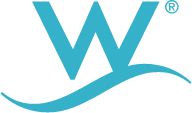Updated 3/24/23
As health care providers, we at Willamette Dental put the safety and well-being of our patients and our teams first. The following information is intended to answer frequently asked questions related to COVID-19 and your dental appointment. For additional resources, use the Help Center.
How soon can I get a routine, non-urgent appointment?
Our goal is to get you the soonest appointment available. Wait times vary based on your provider choice and dental practice location. We try our best to accommodate your lifestyle needs. Hours for all offices and our Appointment Center are currently 7:00am – 5:30pm Monday through Friday and 7:00am – 1:00pm Saturdays (appointments are offered on rotating Saturdays). To schedule an appointment, please call 1-855-433-6825, Option 1.
What safety precautions can I expect at my dental appointment?
Your Part
- If you are experiencing any flu-like symptoms or if you have traveled outside of the U.S. in the past 14 days, please reschedule your appointment by calling 1-855-433-6825, Option 1.
- At this time, we only permit one person per appointment inside our office locations. If the appointment is for a minor, someone who requires assistance, or a patient on an oral sedative, one additional adult may accompany them.
- All patients are asked to practice social distancing and use hand sanitizer before you go back for your appointment.
Our Part
- A robust PPE policy and disinfectant protocols are enforced for all dental practice teams with specifications by job role and/or procedure.
- N95 respiratory masks are custom fit for all clinical employees and are very efficient for filtration of airborne particles to protect our teams.
- We are no longer offering magazines or children’s toys since those items are difficult to clean and disinfect.
What are you doing to minimize aerosols in your dental practices?
- New medical-grade air purification systems from VidaShield that remove 90% of airborne pathogens1 from the air and provide continuous ultraviolet protection are installed in all Willamette Dental practice locations. This product disinfects the air against bacteria, viruses and fungi as well as a consequent reduction in the risk of airborne nosocomial infection in our dental practice environments.
- Additionally, we have installed new high-speed evacuation (HVE) suction systems for all locations. Research has found that using HVE systems greatly reduces aerosols and spatter generated during routine dental procedures2. HVE has been proven to significantly decrease transmission of communicable diseases from patient to dental professionals through reduction of contaminated aerosolized fluids, up to 90%3.
Are your teams vaccinated for COVID-19?
- Vaccinations are a critical step toward reducing COVID-19 infections in our communities. However, employee privacy (HIPAA) prevents disclosure of such information. WDG is compliant with all government vaccine mandates. Additionally, we practice Infection Control beyond the minimum standards required by law and have successfully implemented and maintained necessary protective procedures since COVID began in 2020.
What do I do if I’m sick?
- If you are experiencing any flu-like symptoms, please reschedule your appointment by calling 1-855-433-6825.
- Please call your primary care doctor.
- Stay home, except to get medical care.
How do I prevent the spread of COVID-19?
- Wash your hands often with soap and water for at least 20 seconds.
- Use hand sanitizer with at least 60% alcohol if soap and water are not readily available.
- Cover coughs and sneezes using the inside of your elbow or a tissue.
- Avoid close contact with other individuals and practice “social distancing” by standing six feet apart.
- Stay home if you’re sick.
1Kowalski, W. Report on the Performance of the VidaShield™ System. Retrieved July 28, 2020, from https://vidashield.com/files/whitepaper/dr-kowalski-vidashield-final-report.pdf
2 Dahlke, W., Cottam, M., Herring, M., Leavitt, J., Ditmyer, M., & Walker, R. (2014, December 26). Evaluation of the spatter-reduction effectiveness of two dry-field isolation techniques. Retrieved July 28, 2020, from https://www.sciencedirect.com/science/article/pii/S0002817714611454
3Jacks ME. A laboratory comparison of evacuation devices on aerosol reduction. J Dent Hyg. 2002;76(3):202-206.


